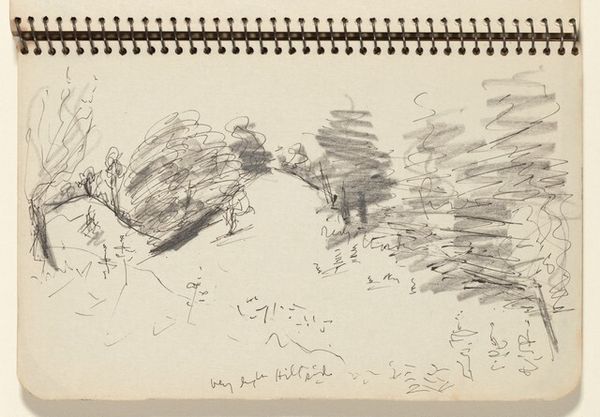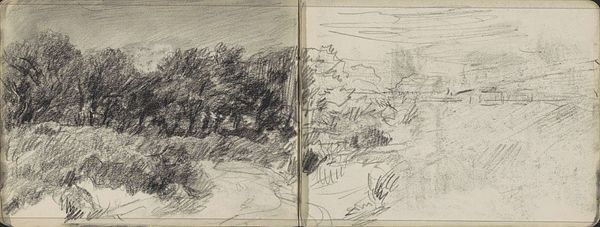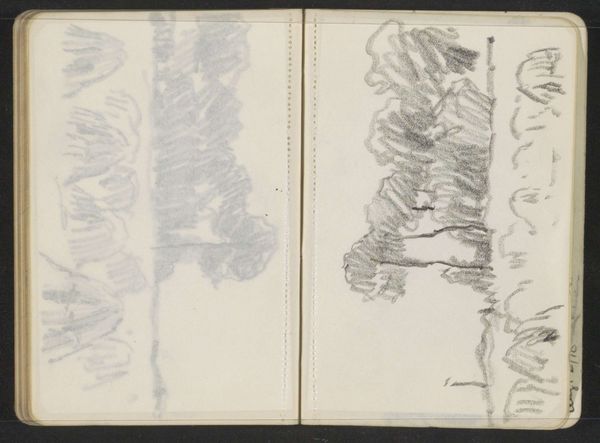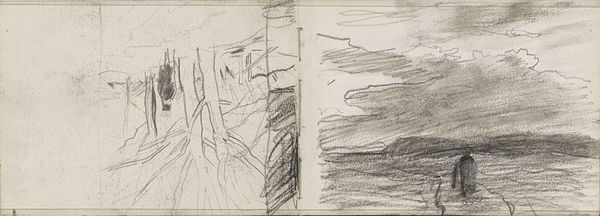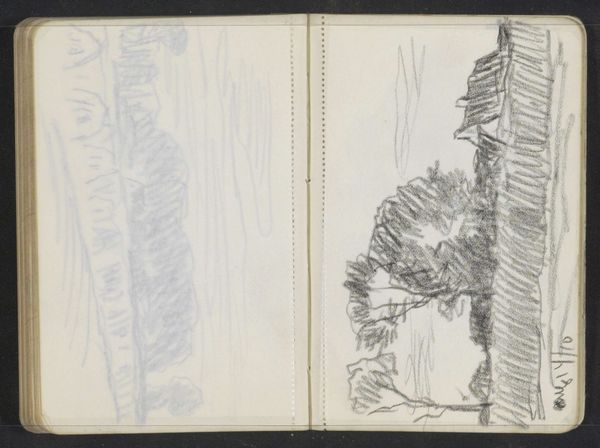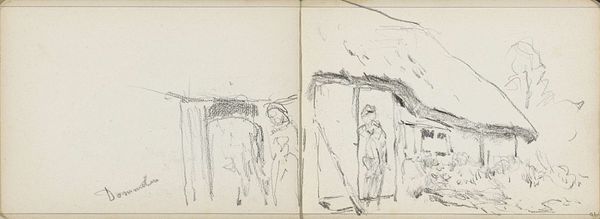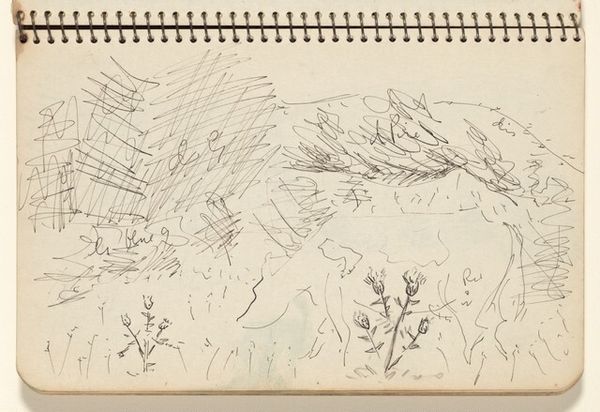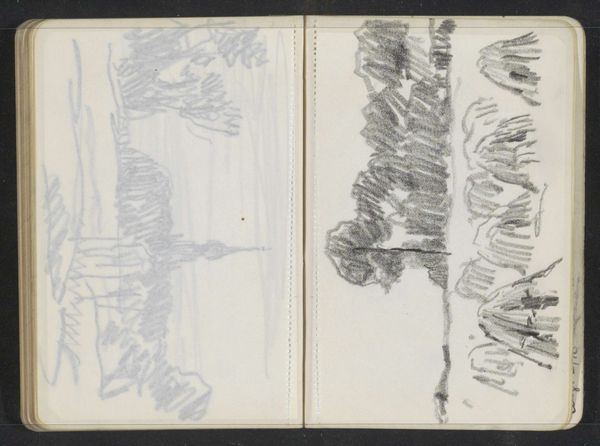
drawing, paper, pencil
#
drawing
#
landscape
#
paper
#
geometric
#
pencil
Copyright: Rijks Museum: Open Domain
Editor: We’re looking at "Bomen en struiken," or "Trees and Shrubs," a pencil drawing on paper, possibly from the 1920s. It's by Johan Antonie de Jonge. It almost feels like looking at a blueprint—more about construction than recreation of the natural world. What strikes you about this piece? Curator: What I notice first is the clear emphasis on process. We’re presented with raw mark-making, the immediate application of pencil to paper. De Jonge isn't trying to mimic nature perfectly. Instead, he’s revealing the physical labor involved in depicting a landscape. It blurs the line between high art and craft. Look at the repeated hatching; what does that communicate to you? Editor: The hatching almost feels like it's mapping out the space, an attempt to understand the volume and texture rather than simply illustrating trees. So, it’s less about what is depicted and more about how it's depicted? Curator: Precisely. Consider the materiality itself. The paper, likely inexpensive sketch paper. The humble pencil, the tool of the draftsman, not the high-art painter. How do these choices contextualize De Jonge's practice within a specific social and economic framework? This likely wasn’t meant for a grand gallery. Editor: It brings an interesting intimacy, like looking through the artist's sketchbook. Almost like seeing the raw components before it's all polished up for consumption. I’d not considered art in that way before, especially landscapes. Curator: Exactly. It forces us to confront the means of production, to acknowledge the often unseen labor and material realities behind the art object. It reminds us that art isn’t just about the finished product, but also about the act of making, the available materials, and even the economic conditions of its creation. Editor: That gives me a completely different view of it. I appreciate the opportunity to really think about the means by which a piece of art is produced, thank you! Curator: It’s a reminder that everything carries a history, from the grandest oil painting to the simplest pencil sketch.
Comments
No comments
Be the first to comment and join the conversation on the ultimate creative platform.
